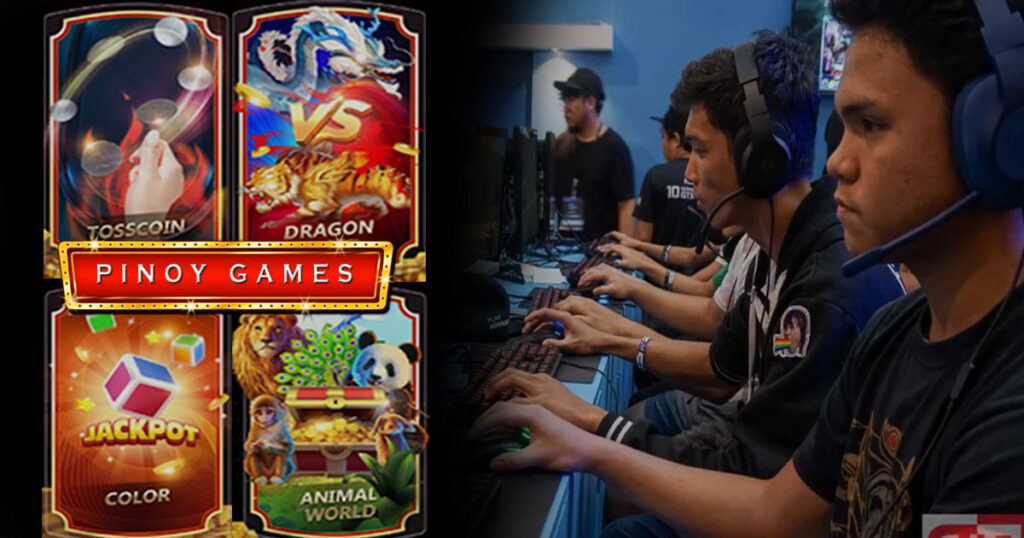Introduction
Picture this: a sunny afternoon in a bustling Filipino neighborhood, kids running around, laughter filling the air as they engage in traditional games like “tumbang preso,” “luksong tinik,” or “piko.” These games have been a part of Filipino culture for generations, evoking cherished memories of our childhood. But in today’s fast-paced digital world, these timeless games are often overlooked.
In this blog post, we’re going to take a journey into the heart of Filipino culture, exploring how these beloved classics are getting a modern makeover. We’ll dive into the nostalgia of traditional Pinoy games, discuss the challenges they face in the modern era, and then shine a light on the innovative adaptations, including those offered by Milyon88, that are breathing new life into these games.
Table of Contents
The Nostalgia of Traditional Pinoy Games
Before we delve into modern twists on Pinoy games, let’s take a moment to bask in the nostalgia of these cherished childhood memories. Remember those carefree days spent playing “sipa” with friends, using a rattan ball, or mastering the art of “patintero” in the street? These games were more than just entertainment; they were a way for kids to bond, learn teamwork, and embrace Filipino heritage.
Adapting to the Modern World
As we fast forward to today, we find ourselves in a digital age dominated by smartphones, computers, and video games. Traditional Pinoy games face numerous challenges in this new era. Kids are often more captivated by screens than the streets, and the art of playing “habulan” is gradually being replaced by online gaming. This shift threatens the preservation of our cultural heritage.
Pinoy Game Innovations
But here’s the good news: our Filipino spirit of innovation and adaptability is helping to keep these games alive. Let’s explore some fascinating examples of how Pinoy games have evolved with a modern twist.
Modernized Gameplay

Imagine “tumbang preso” where you don’t actually have to physically knock down a can. With the introduction of foam balls and digital scoring systems, the game has become more accessible and exciting. Some variations even incorporate augmented reality (AR) technology, allowing players to interact with virtual objects in the real world.
Technology Meets Tradition
Technology has played a significant role in the resurgence of Pinoy games. Mobile apps like “sungka” and “dama” bring traditional board games to your fingertips, making it easy to play with friends or family, even if they’re miles away. These apps stay true to the original rules while adding a modern twist with colorful graphics and user-friendly interfaces.
Innovative Variations
Perhaps one of the most exciting developments is the creation of new games inspired by traditional favorites. “Bato-bato-pick” has evolved into a digital version called “Rock, Paper, Scissors Pick,” where players can challenge opponents from around the world. These innovative adaptations breathe fresh life into our classic games, attracting a new generation of players.
The Impact on Filipino Culture
The revival and modernization of Pinoy games go beyond entertainment. They play a vital role in preserving our cultural heritage. These games teach our youth about teamwork, strategy, and the importance of physical activity, all while celebrating our unique Filipino identity.
Where to Experience Modernized Pinoy Games
Now that you’re excited to dive into the world of modernized Pinoy games, where can you experience them? Local communities often organize events that feature these games, giving you a chance to reconnect with your roots. Additionally, you can explore online platforms and app stores to discover digital versions of your favorite games.
Conclusion
In conclusion, our traditional Pinoy games may have faced challenges in the modern era, but they are far from being forgotten. Thanks to innovative adaptations, technology, and the dedication of individuals and communities, these games are making a comeback. They’re not just games; they’re a testament to our culture and heritage, serving as a bridge between generations.
As we embrace these modern twists on classic favorites, we ensure that the spirit of Filipino tradition lives on. So, whether you’re playing “sungka” on your phone or joining a local “luksong tinik” competition, remember that the essence of these games remains the same – fun, camaraderie, and a celebration of what it means to be Pinoy.
Frequently Asked Questions (FAQs)
1. What are Pinoy games?
- Pinoy games are traditional Filipino games and activities that have been passed down through generations. These games are an integral part of Filipino culture and are often played by children and adults alike.
2. Why are Pinoy games important?
- Pinoy games are important because they help preserve Filipino cultural heritage. They teach values such as teamwork, sportsmanship, and creativity. Additionally, they provide a fun way to stay physically active and socially connected.
3. How have traditional Pinoy games evolved with modern twists?
- Traditional Pinoy games have evolved with modern technology and innovation. Some have digital versions or apps, while others incorporate augmented reality (AR) or virtual reality (VR) elements. Modern twists also include creative adaptations and variations of the original games.
4. Can I still play traditional Pinoy games today?
- Yes, you can still play traditional Pinoy games today. Many local communities organize events and gatherings that feature these games. Additionally, there are mobile apps and online platforms where you can play digital versions of Pinoy games.
5. Are there any organizations or initiatives dedicated to preserving Pinoy games?
- Yes, there are organizations and initiatives dedicated to preserving and promoting Pinoy games. These groups often organize events, workshops, and educational programs to ensure that these games continue to be part of Filipino culture.
6. What are some modern adaptations of traditional Pinoy games?
- Modern adaptations include digital versions of games like “sungka” and “dama,” as well as innovative variations of classics like “tumbang preso” with AR technology. Some adaptations even introduce global elements to traditional Filipino games.
7. How can I get involved in the revival of Pinoy games?
- You can get involved in the revival of Pinoy games by participating in local events, supporting organizations dedicated to preserving Filipino culture, and sharing your knowledge and experiences with others. Playing modernized versions and apps is another way to engage with these games.
8. What is the cultural significance of modernized Pinoy games?
- Modernized Pinoy games help bridge the gap between tradition and the digital age. They keep Filipino culture alive and relevant while introducing these games to a global audience. They also promote the values and skills inherent in traditional games, such as strategy, teamwork, and physical activity.
Here are some traditional Filipino games:
- Laro ng Lahi: This category encompasses various traditional Filipino games, often played during town fiestas, family gatherings, and school events. These games reflect the rich cultural heritage of the Philippines.
- Piko: Similar to hopscotch, Piko involves players hopping over a series of rectangles drawn on the ground while trying not to step on the lines or boundaries.
- Tumbang Preso: In this game, players try to knock down a can with slippers while a guard, known as the “it” or “taya,” tries to catch the slippers before they can retrieve them.
- Sipa: Sipa is a skillful game where players aim to keep a small metal ring or a shuttlecock, called the “sipa,” in the air as long as possible using their feet.
- Luksong Baka: Players jump over another player bent over like a cow. The jumper must clear the back of the bent player without touching them.
- Luksong Tinik: Two players serve as the base by putting their feet and hands together to form an obstacle. Other players jump over this hurdle, which gets higher as the game progresses.
- Patintero: Players try to cross a rectangular grid without being tagged by the “it” players, who can only move along the lines of the grid.
- Taguan: A classic game of hide and seek, where one player seeks out hidden players.
- Palosebo: A challenge to climb a greased bamboo pole to reach a flag or prize at the top.
10. Sungka: A board game involving a carved wooden board and shells or stones, where players distribute these pieces into the holes on the board strategically.


